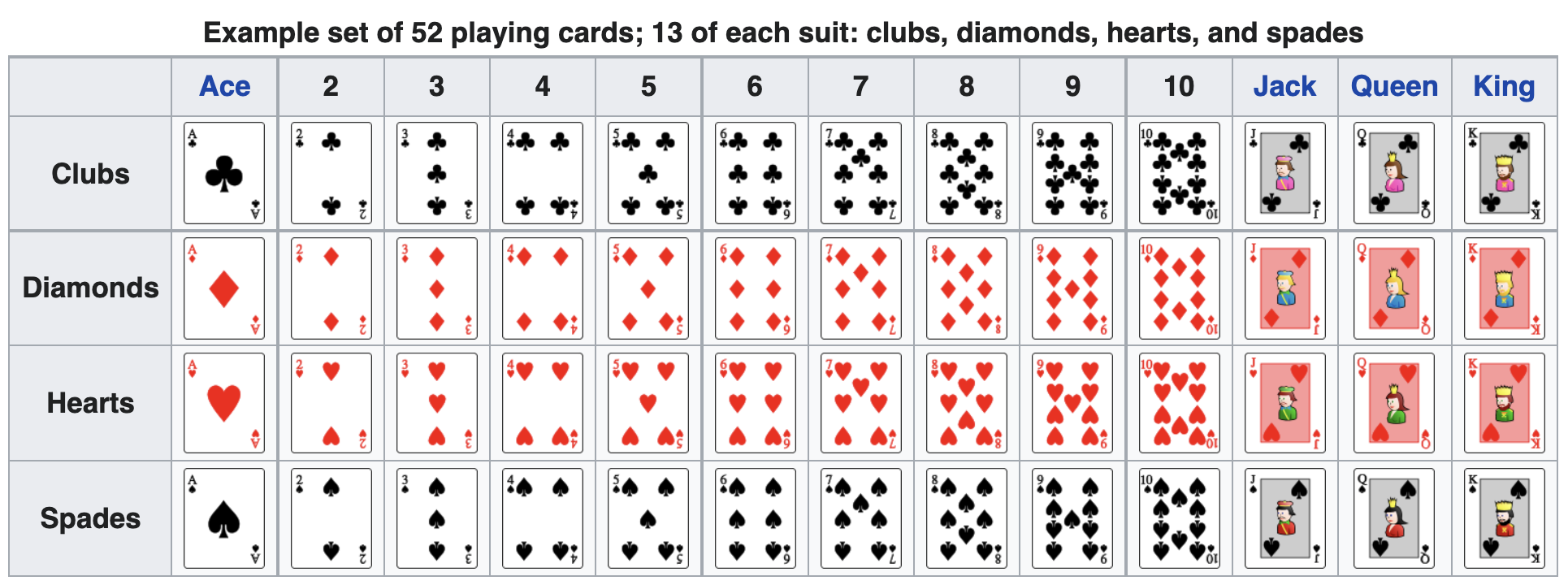Computing the Probability of the Union of Two Events
We are often interested in finding the probability that one of multiple events occurs. Suppose we are playing a card game, and we will win if the next card drawn is either a heart or a king. We would be interested in finding the probability of the next card being a heart or a king. The union of two events [latex]E\text{ and }F,\text{written }E\cup F[/latex], is the event that occurs if either or both events occur.
[latex]P\left(E\cup F\right)=P\left(E\right)+P\left(F\right)-P\left(E\cap F\right)[/latex]
probability of the union of two events
The union of two events [latex]E\text{ and }F,\text{written }E\cup F[/latex], is the event that occurs if either or both events occur.
The probability of the union of two events [latex]E[/latex] or [latex]F[/latex] (written [latex]E\cup F[/latex] ) equals the sum of the probability of [latex]E[/latex] and the probability of [latex]F[/latex] minus the probability of [latex]E[/latex] and [latex]F[/latex] occurring together [latex]\text{(}[/latex] which is called the intersection of [latex]E[/latex] and [latex]F[/latex] and is written as [latex]E\cap F[/latex] ).
[latex]P(E \text{ or }F) = P(E \cup F)=P\left(E\right)+P\left(F\right)-P\left(E\cap F\right)[/latex]

Suppose the spinner below is spun. We want to find the probability of spinning orange or spinning a [latex]b[/latex].That is, find [latex]P(\text{orange} \cup b)[/latex].
- There are a total of [latex]6[/latex] sections, and [latex]3[/latex] of them are orange. So, the probability of spinning orange is [latex]P(\text{orange}) = \frac{3}{6}[/latex].
- There are a total of [latex]6[/latex] sections, and [latex]2[/latex] of them have a [latex]b[/latex]. So the probability of spinning a [latex]b[/latex] is [latex]P(b) = \frac{2}{6}[/latex].
If we added these two probabilities, we would be counting the sector that is both orange and a [latex]b[/latex] twice. To find the probability of spinning an orange or a [latex]b[/latex], we need to subtract the probability that the sector is both orange and has a [latex]b[/latex].
[latex]P(\text{orange} \cup b) = P(\text{orange})+ P(b) - P(\text{orange} \cap b) = \dfrac{3}{6}+\dfrac{2}{6}-\dfrac{1}{6}=\dfrac{4}{6}[/latex]
The probability of spinning orange or a [latex]b[/latex] is [latex]\dfrac{4}{6}[/latex] or [latex]\dfrac{2}{3}[/latex].
The union of [latex]E[/latex]and [latex]F[/latex] includes all the elements that could be present in [latex]E[/latex] or in [latex]F[/latex], one or the other.
The intersection symbol given above [latex]\cap[/latex] may be new notation for you. It is used to express the intersection of events. Mathematically, it represents the word and.
The intersection of [latex]E[/latex] and [latex]F[/latex] includes all the elements present in both [latex]E[/latex] and [latex]F[/latex], and not in just one or the other.
Try the example and practice problem below on paper to get familiar with the formula.
